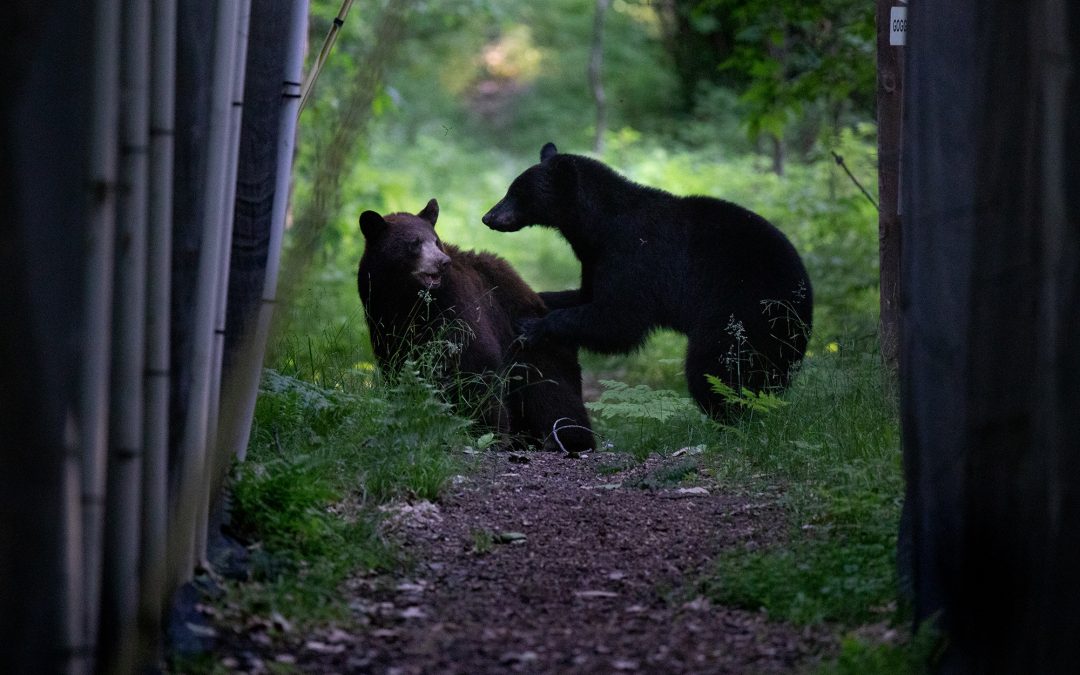Up here in the forests of Minnesota we have some very rare animals!
Campers are used to seeing squirrels, rabbits, deer, blue jays, bass, and pileated woodpeckers throughout camp. But sometimes in a special quiet moment campers may come across one of these illusive creatures. Continue reading below to learn a little more about the rare animals we might see around Foley…
Black Bear
Parents don’t freak out! Like I said above, this is a RARE thing to see at Camp Foley. BUT there are times when a black bear has gotten a little close to camp. Black bears live throughout most of North America, including northern Mexico. They typically live in forests and are excellent tree climbers, even sleeping in trees during the summer. They’re also found in mountains and swamps. Despite their name, black bears can be blue-gray or blue-black, brown, cinnamon, or even sometimes (rarely) white. They are never that curious about us humans, but are very interested in our garage cans and dumpsters. Campers at Camp Foley are much too loud for bears to get to near, but sometimes at just the right moment we will catch a glimpse of one up in the woods, or running away from our dumpsters. We have the most bear sightings in the early spring before campers arrive. Bears are just coming out o hibernation and the cubs are ready to explore.
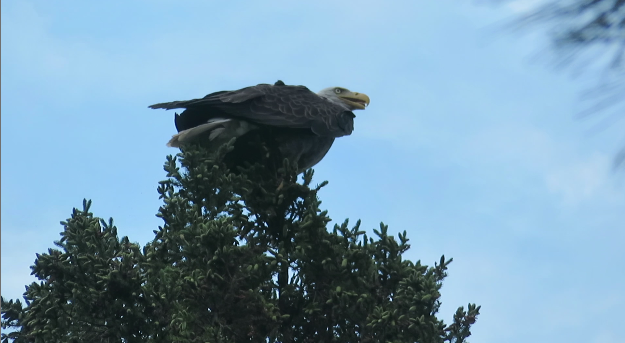
Eagle spotted high in the trees at Camp Foley
Bald Eagle
I know what your thinking… eagles are a rare sight at Foley? In fact yes, it is always a spectacle when they appear in the sky. Eagles have expanded their range from northern Minnesota and now nest in southeastern Minnesota. In 1988, they even began nesting along the Minnesota River Valley in western Minnesota for the first time in over 100 years. In 2007, it was estimated the Minnesota population is over 2300 pairs! We often see eagles throughout the summer, one or two at a time. At Foley they make their nests high in the trees. Eagle nests are called aeries (AIR-ees). Bald eagles build their nests at the very top of tall trees so the eggs will be safe. Some parents come back year after year to the same nest, adding more sticks, twigs, and grass each time. More often we will find fish they have dropped while flying. It is always interesting to see a dead fish in the middle of the west end of camp!
Beaver

Not taken at Camp Foley, but a very cute beaver nevertheless.
These illusive creatures can only be found in one place at Camp Foley… hidden lake! This little lake is down the shoreline from main camp, where we often take Outdoor Education groups that visit us in the spring and fall. Sometimes on very rare occasions we will come across a dam or evidence that a beaver friend had been there. Beavers are fierce, with their strong jaws and teeth, beavers can chew through a six-inch tree in 15 minutes. A single beaver can chew down hundreds of trees each year. when beaver populations get too high, they cause problems by cutting down valuable trees and flooding roads with their dams. Beavers also spend a lot of time in the water, using their tails as rudders and propellers when swimming.
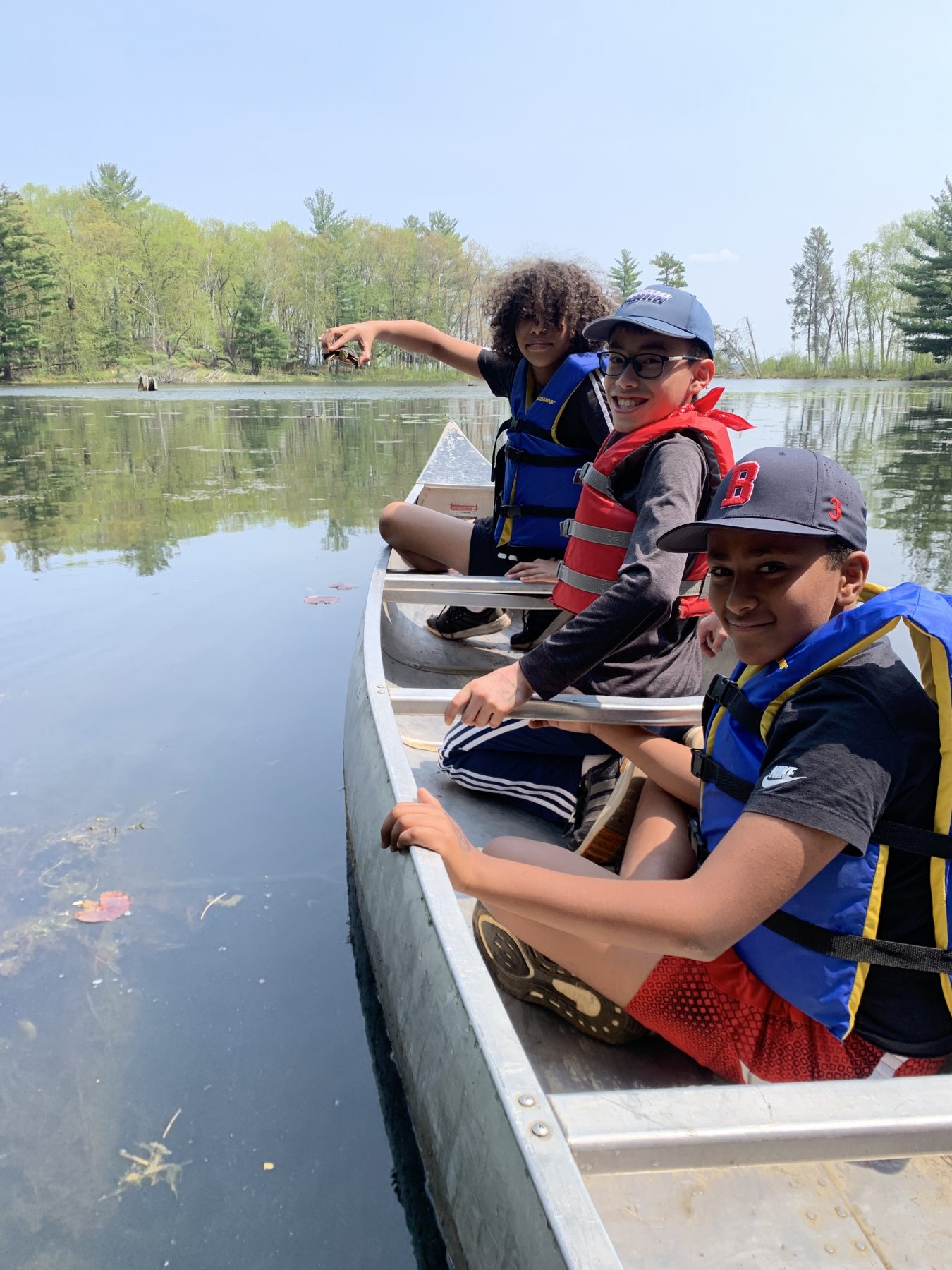
Kids on the lookout for a beaver sighting!
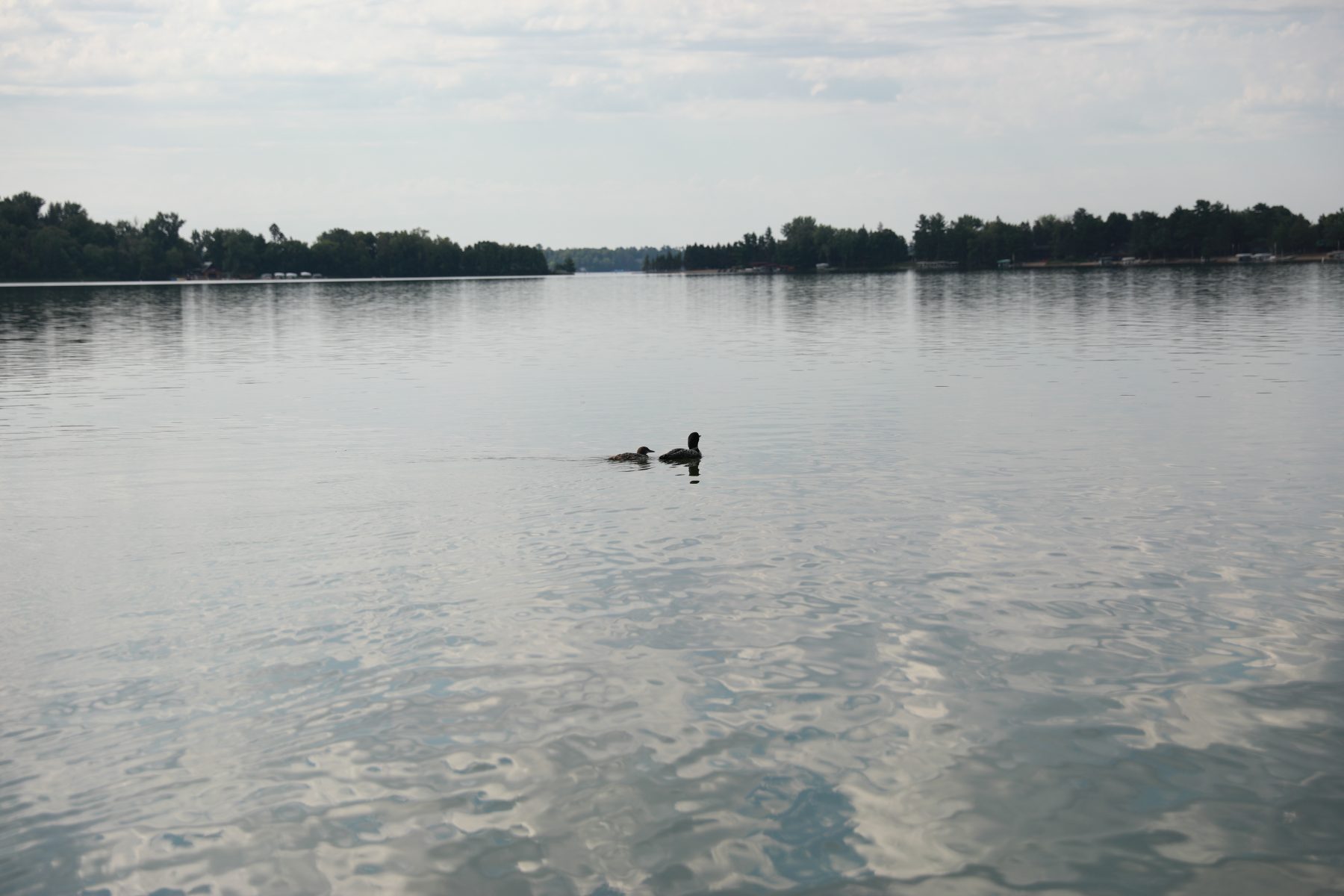
Loons seen from the Crosslake National Loon Center Pontoon this summer in Minnesota!
Loon
These birds become a very rare sight depending on the time of the year. We can spot loons, or more often hear loons during May and early June out on Whitefish Lake. But by July and August we are hard pressed to find any of the Minnesota state bird around Foley. Loons are found on lakes throughout central and northeastern Minnesota. In September, Minnesota’s adult loons travel to their winter home along the Atlantic coast from North Carolina south to Florida, or on the Gulf of Mexico. Younger loons follow a month or so later. Baby loons are our favorite things to spot at Camp Foley. Loon chicks can swim almost immediately and dive about a week after birth, but they often take rides on the backs of their parents. Newly-hatched loons are fed by their parents for about six weeks. By 11 or 12 weeks they can fish and fly on their own. Learn more about Loons and loon fallout here!
Red Tailed Hawk
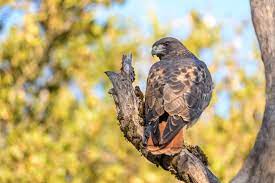
Campers often think Red Hawks look like Eagles from high up here at Camp Foley.
This is the rarest sight on the list! They are often mistaken for eagles from a distance. Both male and female hawks look similar although females are larger. They also often show a dark cap, have pale grayish on their face and side of the neck, and dark banding on their tail. This species preys on a variety of small animals including squirrels, rats, snakes, and birds. It catches prey by swooping down from a perch or from soaring flight. They use a wide range of habitats in Alaska and the USA, much of Canada, Mexico, the Caribbean, and parts of Central America.
The Bear photographed at the top was done by our Owner and Director Alli Faricy.
Want a chance to see these animals for yourself? Register today for Camp Foley, and explore the beautiful nature of Minnesota! Have questions and want to chat with an Assistant Director? You can do that here!

